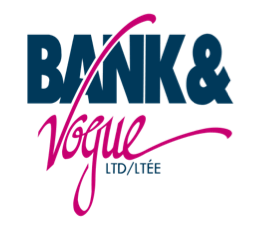Executive Summary
The wholesale secondhand clothing industry has undergone transformative growth in 2025, with global market values projected to reach US $350 billion by year-end. Multiple drivers—economic shifts, sustainability imperatives, and evolving consumer preferences—have propelled resale, recommerce, and recycling into mainstream trade.
This white paper provides an in-depth analysis of key global and regional trends, the opportunities and challenges for wholesalers, and where organizations like Bank & Vogue can offer unique expertise in navigating this evolving landscape.
1. Global Market Snapshot 2025
- Global Value: Secondhand apparel market is on track to triple from 2020 levels to US $350 billion.
- Consumer Adoption: In North America, 70% of consumers purchased at least one secondhand item in the past year.
- Resale Platforms: Growth of ThredUp, Vinted, and luxury recommerce platforms continues to ripple upstream into wholesale demand.
2. Regional Trends Driving Growth
North America
- Resale market expected to hit US $73B by 2028.
- Inflation and tariffs on fast fashion have pushed consumers toward thrift and resale.
- Younger demographics drive preference for vintage and branded goods.
China & Asia
- Secondhand luxury boomed 35% in 2025, fueled by a shifting economy and cultural acceptance of pre-owned goods.
- Increasing demand for authentication and quality assurance creates opportunity for reliable wholesale supply.
Latin America & Africa
- Informal market resellers remain central to distribution.
- Growing demand for affordable clothing in tropical mixes and warm-weather assortments.
- Challenges include import restrictions and quality concerns.

3. Key Market Drivers in 2025
- Economic Pressure: Cost-of-living challenges drive thrift demand.
- Sustainability & Regulation: EU circularity legislation and EPR (Extended Producer Responsibility) accelerate recycling and resale mandates.
- Digital Transformation: AI forecasting, resale authentication, and recommerce platforms expand wholesale needs.
- Consumer Preferences: Gen Z demand for uniqueness, authenticity, and affordability continues to redefine sourcing strategies.
4. Opportunities & Challenges for Wholesalers
Opportunities
- Supplying high-demand categories (denim, sportswear, vintage, branded fashion).
- Expanding into textile recycling beyond apparel (insulation, furniture, industrial reuse).
- Leveraging analytics for inventory forecasting and optimizing logistics.
Challenges
- Logistics disruptions (port strikes, freight delays, rising shipping costs).
- Quality control and customer trust in secondhand supply.
- Shifting trade regulations (import bans, recycling mandates).
5. Bank & Vogue’s Unique Perspective
At Bank & Vogue, our 25+ years in the global secondhand wholesale industry give us a rare, 360-degree vantage point across the supply chain. Our insights include:
- Logistics Mastery: Expertise in optimizing 53-foot container packing for maximum value and efficiency.
- Market Specialization: Supplying tailored mixes (e.g., graded goods for LATAM) that meet regional reseller needs.
- Ethical Supply Partnerships: Supporting both formal and informal market sellers by emphasizing quality, transparency, and fair practices.
- Innovation in Circularity: Extending beyond resale into recycling streams and creative reuse, positioning textiles as a renewable resource, not waste.
- Data-Driven Forecasting: Using global buyer/seller networks to anticipate demand shifts in real time.
This dual role—connecting suppliers with buyers while innovating in circular economy solutions—positions Bank & Vogue as a thought leader ready to guide wholesalers and resellers through the evolving 2025 market.
6. Looking Ahead: The Road to 2030
- Resale projected to outpace traditional retail growth 10x by 2030.
- Regulations will increasingly force transparency, recycling, and circular design.
- Wholesalers will shift from being just distributors to becoming sustainability partners and data-driven strategists.
Conclusion
Closing 2025 marks a turning point for the wholesale secondhand industry. What was once a niche sector is now a cornerstone of sustainable fashion and global commerce. Wholesalers who adapt—by embracing data, sustainability, and regionalized solutions—will thrive in the decade ahead.
Bank & Vogue stands ready to lead this transition, offering the expertise, networks, and innovative mindset that the industry needs to build a future where textiles truly circulate.







